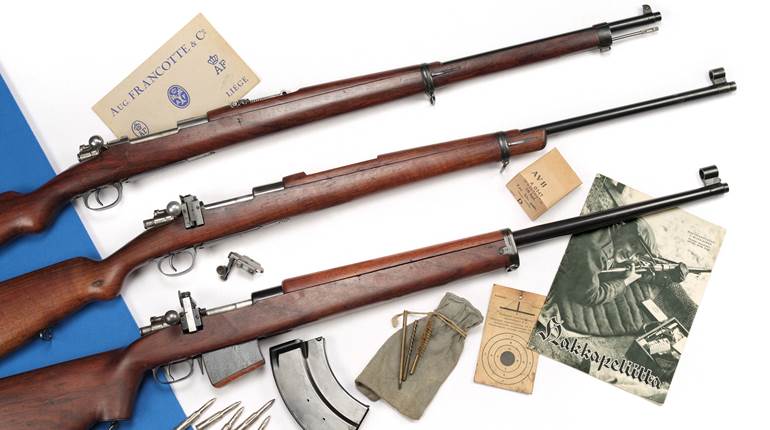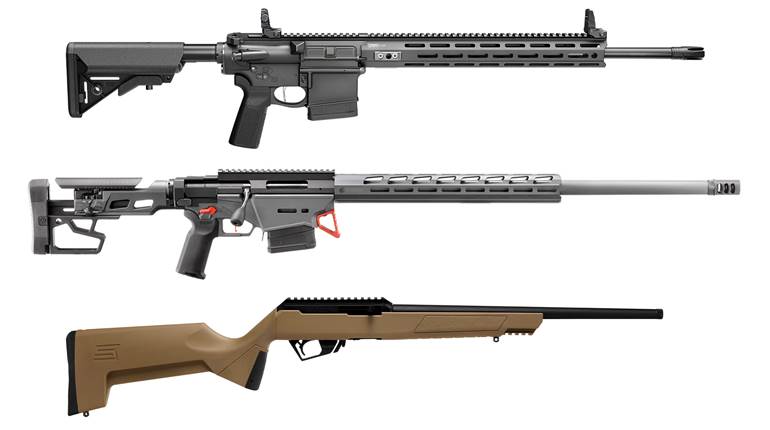
Q. I have recently joined the ranks of folks owning Mosin-Nagant Model rifles, in particular a Model 91/30 in 7.62x54 mm R. I am amazed at the accuracy of such a simply designed and constructed rifle. I have experienced an occasional problem with extraction, which generally appears after the gun has warmed up. The problem seems to come and go. I have a friend who has a Model 1944 Mosin-Nagant carbine with the same problem. On the Internet, some recommend swabbing out the chamber with BreakFree. I have cleaned the rifle thoroughly and swabbed out the chamber with a Teflon-bearing oil; the problem seems to be abating.
The chamber does not appear to be pitted, and the rifle is in excellent, arsenal-refurbished condition. I am shooting my own reloads using WW846 (surplus powder similar to BLC 2) behind a 0.311", 150-grain bullet. Can you recommend anything that might be done to eliminate this problem, or is it a design feature that has to be accepted?
A. Without the opportunity to personally examine your rifle to determine the cause of your extraction problems, I cannot provide you with a specific fix. Additionally, a “problem with extraction” is a bit vague. Is the extractor slipping over the rim of the cartridge? Is the extractor pulling part of the rim off? Is there just an extra effort needed to lift and open the bolt? There are many variables that prevent me from offering a simple solution.
My first guess is that chamber roughness might be hindering extraction, especially when you mention, “arsenal refurbished.” Many of these rifles were recently Parkerized with little attention paid to protecting the chamber and bore.
Parkerizing is a conversion process wherein the surface of the metal is subjected to a chemical that converts it to a phosphate. This relatively minor etching is not harmful to moving and reciprocating parts and actually aids in keeping lubes and preservatives in place. However, I do not believe that chambers and bores should be included in Parkerized finishes. I suppose that shooting and rigorous cleaning might eventually smooth it up, but fouling could be an issue until that happens.
While a rifle chamber should not be polished mirror bright, because we depend on obturation of the case during the high-pressure phase of firing to hold the case in place and lessen rearward thrust on the locking system, the walls of the chamber must be smooth enough to “release” the case once pressure drops.
Scrubbing the chamber with a bronze brush, or even a light “once-over” with emery cloth to remove the frangible portion of the coating might hasten the return to normal extraction. I would caution you against the use of slick lubes in the chamber. As I mentioned above, a chamber should be smooth and dry. You might also check your case length, and trim as necessary. You should also check your handloads, as sticky extraction can be an indication of excessive pressure.
—John W. Treakle
This “Questions & Answers” was featured in the February 2007 issue of American Rifleman. At time of publication, "Questions & Answers" was compiled by Staff, Ballistics Editor William C. Davis, Jr., and Contributing Editors: David Andrews, Hugh C. Birnbaum, Bruce N. Canfield, O. Reid Coffield, Charles Q. Cutshaw, Charles M. Fagg, Angus Laidlaw, Harry Hunter, Charles E. Petty, Robert B. Pomeranz, O.D., Jon R. Sundra, Jim Supica, John M. Taylor and John W. Treakle.
To subscribe to the magazine, visit the NRA membership page and select American Rifleman as your member magazine.





































